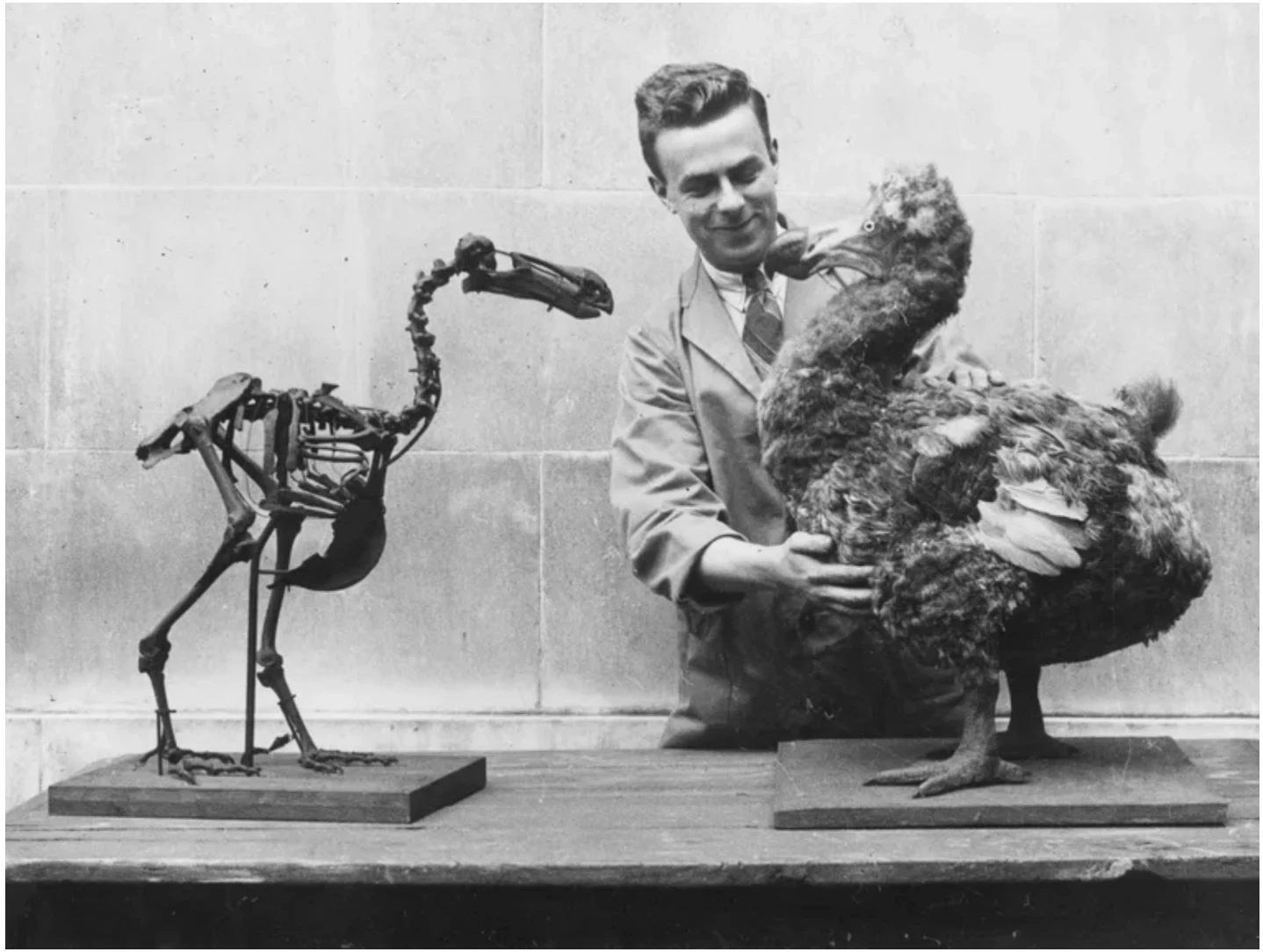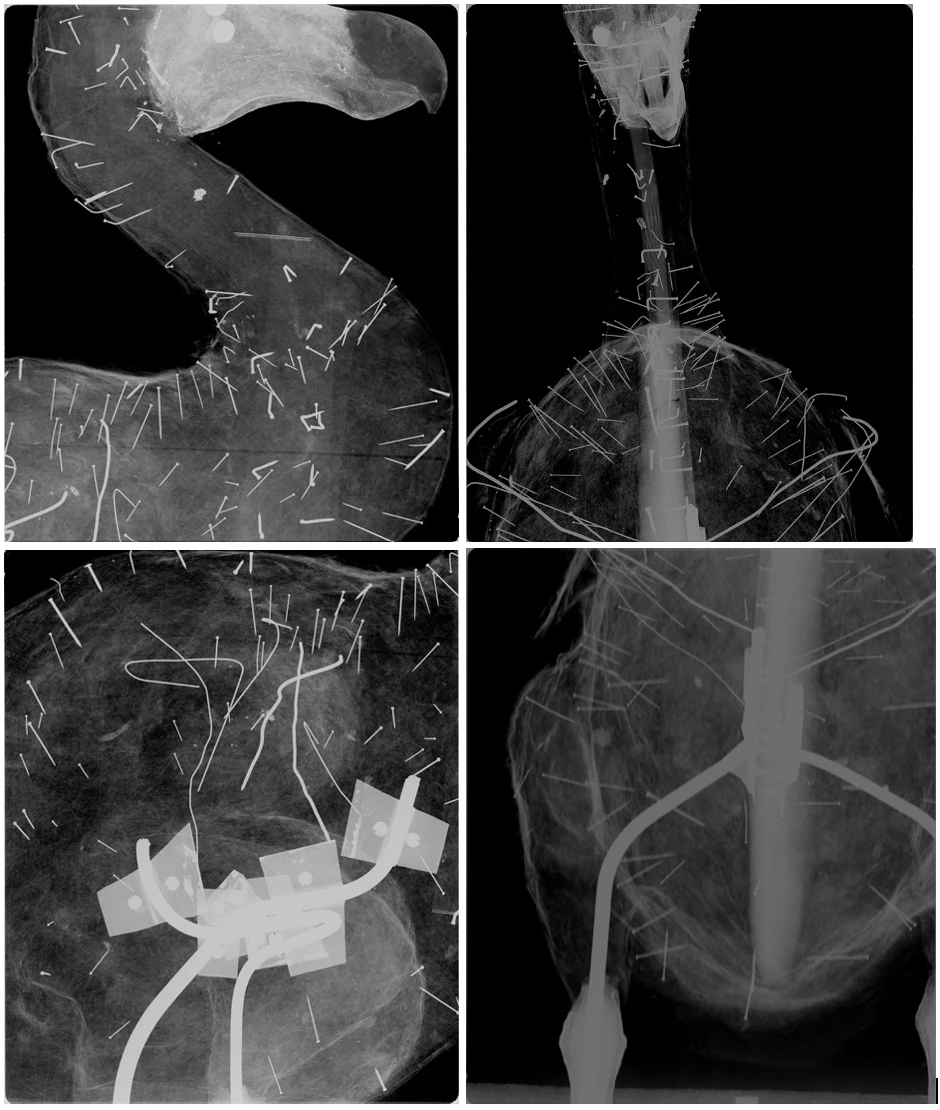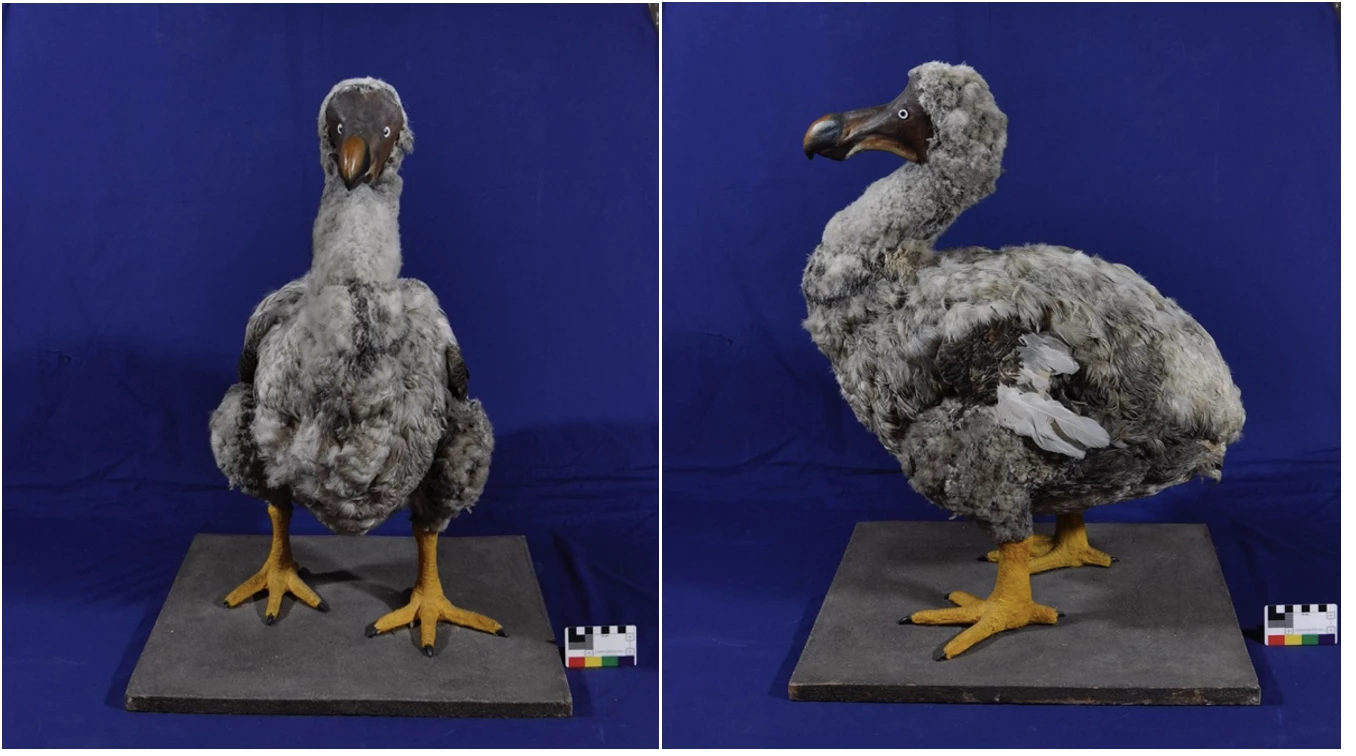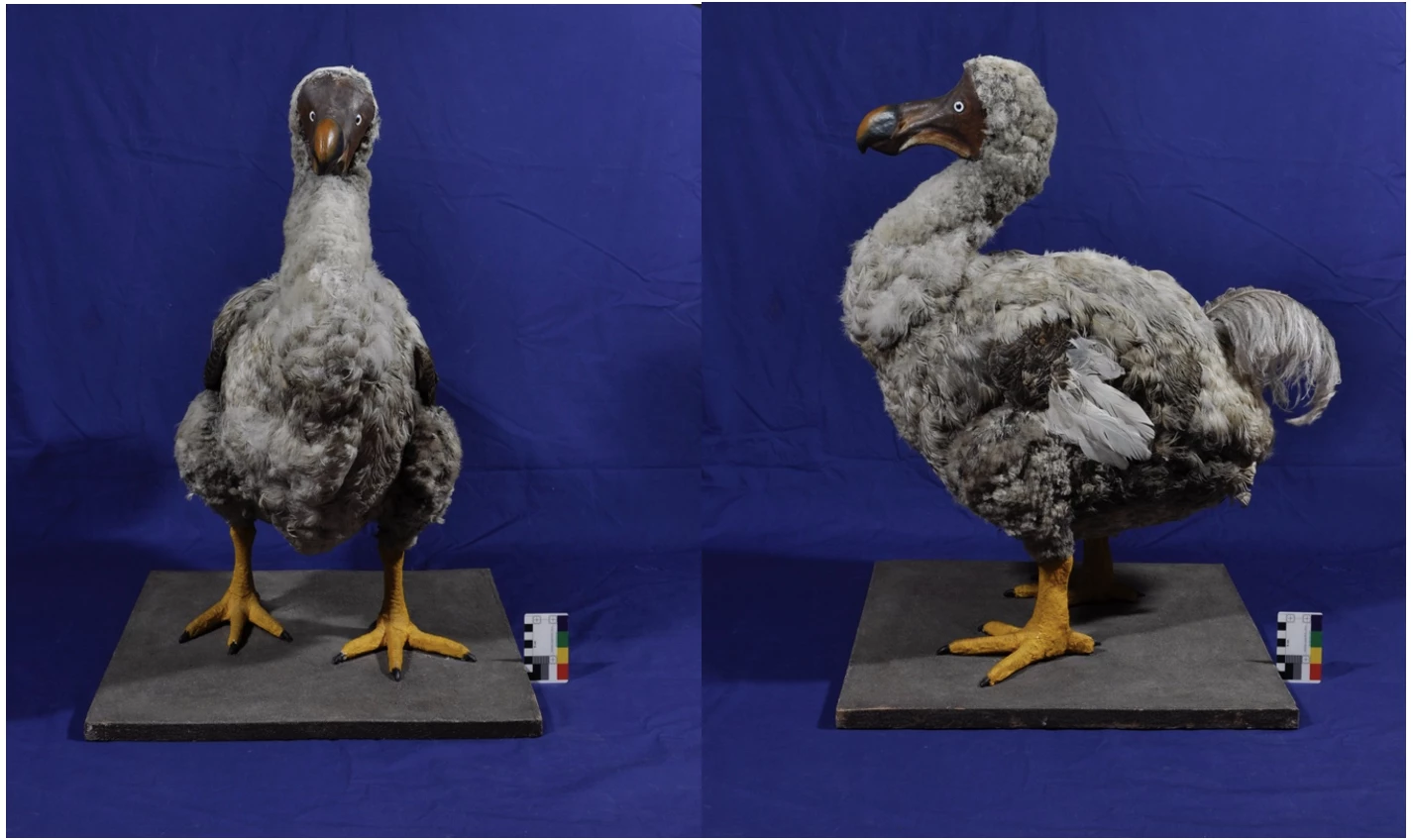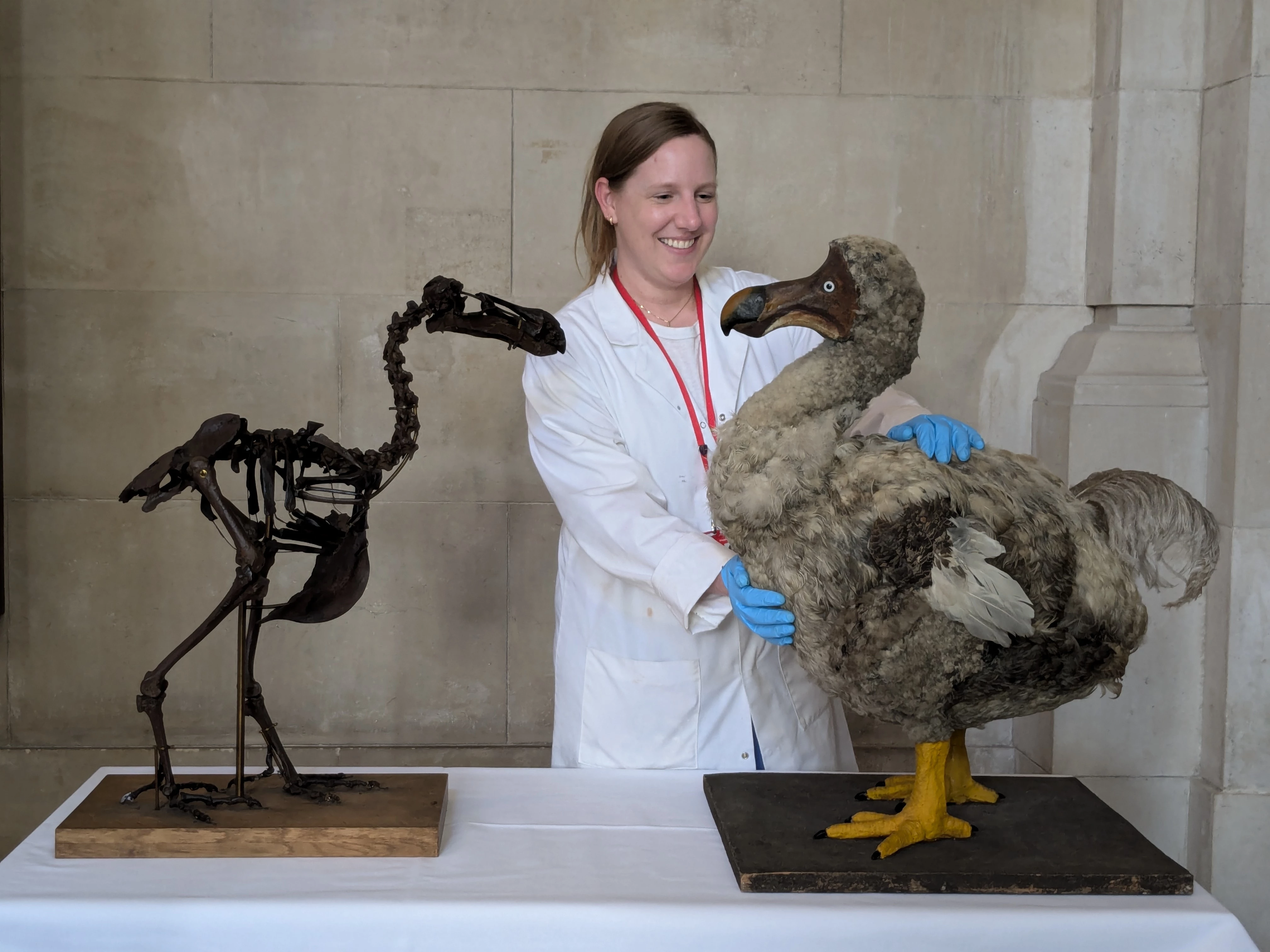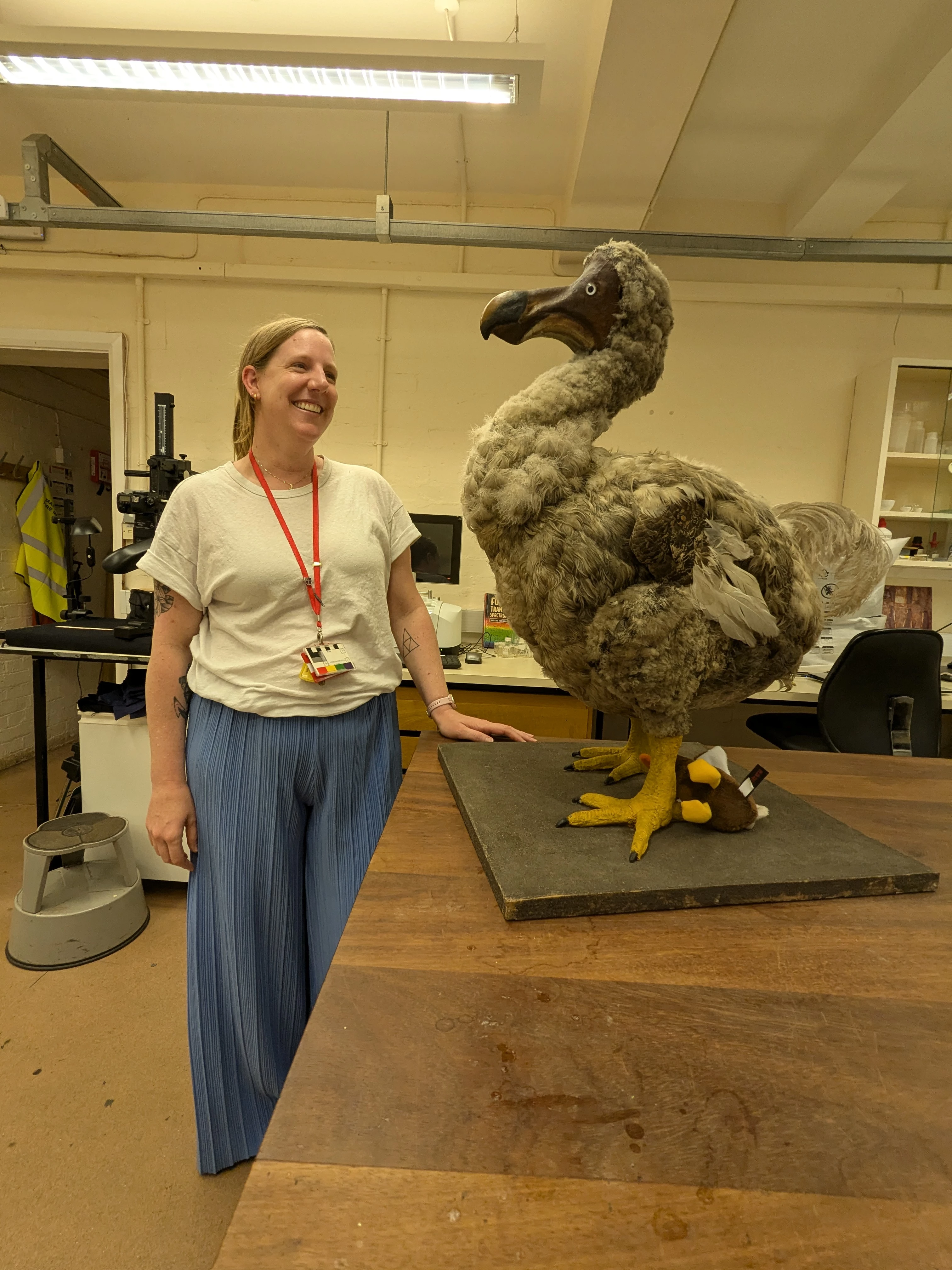New Life for an Old Bird
, 1 August 2024
Written by Lindsey Sartin, MA Conservation Practice student, Durham University on Placement at National Museum Cardiff.
The Dodo bird was first documented in 1598 on the island of Mauritius in the East Indies, but unfortunately, it became extinct by 1700—before modern taxidermy processes were discovered and used for the preservation of animal specimens. However, some replica taxidermy models exist. One of these is at Amgueddfa Cymru –Museum Wales. The museum purchased it in 1915 from Rowland Ward Ltd. for 15 GBP (roughly the equivalent of 1288 GBP today).
The Amgueddfa Dodo—named Dudley by the conservation team—contains information about the discovery, distinction, and documentation of the extinct Raphus cucullatus species, centuries of speculation and research about what the species looked like, the development and cultural fascination with taxidermy, and artistic model-making processes.
Before conservation, little was known about Dudley and how it was made. X-radiographs revealed the internal structure of the model, and Fourier Transform Infrared Spectrometry (FTIR) was used to understand the composition of Dudley's feet, face, and dressing (the external parts of taxidermy specimens, including the feathers and skin). X-ray fluorescence (XRF) and scanning electron microscopy with elemental analysis indicated arsenic had been used as a preservative for the skin to prevent pests from consuming it, so extra safety precautions had to be taken when handling Dudley.
The analysis results were then compared with Rowland Ward's methods of mounting specimens, described in a book written by Rowland Ward in 1880. Letters between William Hoyle, the Museum Director at the time, and Rowland Ward Ltd also revealed that Dudley had a tail when he first arrived at the museum, but it had since been lost. An image of Dudley dated to circa 1938 also showed it had a tail in the past.
All the investigations showed that iron rods make up the skeletal frame in the legs, extend through a wood base made of two boards held together with glue and dowels and are attached to a thin board cut to the shape of Dudley's body. The neck is probably circular and made from a separate board from the body. Dudley's head and feet are plaster, and tempera and oil paints were used to add colour to both parts. A piece of canvas connects the head to the body. The body is stuffed with wool, and the dressing includes real, natural bird skin and feathers (down, contour, and flight feathers). Polyvinyl acetate (PVA) between some toenails indicates that Dudley was conserved sometime after 1930. When the model first arrived at the museum, it should have had a tail with feathers that curved away from the head.
Condition Before Conservation
Being over 100 years old, Dudley's skin had become dry and brittle, and many feathers had fallen out particularly around the head, neck and legs. The plaster in the feet was crumbling. A claw was missing from one of the talons, feathers were missing from one of the wings, and the tail was missing. There was also a layer of dust on the entire model.
Conservation Treatment
First, dust was removed from Dudley with a soft, sable brush towards a low suction museum vacuum. The vacuum nozzle was covered with a fine mesh to ensure no feathers or skin were collected into the vacuum.
Then, the plaster on his feet was consolidated with a polyvinyl butyral resin (Buvtar 98) in ethanol. A replacement claw was made with Thibra thermoplastic painted black and adhered with an ethyl methacrylate and methyl acrylate copolymer resin (Paraloid B72).
Feathers that had fallen off Dudley in the past were stuck back on with Paraloid B72.
New feathers had to be purchased to replace the ones missing from the wing and tail, but the new feathers were bright white and did not match the appearance of the rest. So, acrylic paints were diluted with isopropyl alcohol and airbrushed onto the new feathers. Once dry, the tail feather was curled to the proper shape with steam. All the new feathers were then placed in their proper positions with entomology pins.
With an improved appearance and stability, Dudley is now ready to meet the public! Dudley's visit to the conservation lab also allowed the conservation team to learn more about how the model was constructed, which will allow the museum to better preserve it for current and future generations to enjoy.
